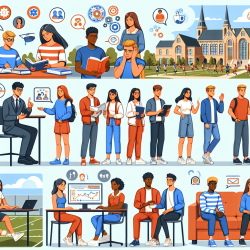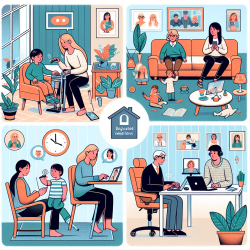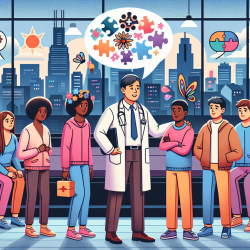Introduction
As a Special Education Director, staying informed about the latest research and methodologies is crucial for enhancing the services provided to students with special needs. One such area of interest is the application of asymptotic theory for maximum likelihood estimates in reduced-rank multivariate generalized linear models. This advanced statistical approach can offer significant insights and improvements in various educational and therapeutic settings, including online therapy services provided by companies like TinyEYE.
Understanding the Research
The research paper titled "Asymptotic theory for maximum likelihood estimates in reduced-rank multivariate generalized linear models" by E. Bura et al. delves into the development of M-estimation theory for concave criterion functions. These functions are maximized over parameter spaces that are neither convex nor closed. The study provides theoretical results that derive the consistency and asymptotic distribution of maximum likelihood estimators in reduced-rank multivariate generalized linear models, particularly when response and predictor vectors have a joint distribution.
Implications for Practitioners
For practitioners in the field of special education and online therapy, the outcomes of this research can be transformative. Here are some ways to implement these findings:
- Improved Estimation Accuracy: By applying the asymptotic theory, practitioners can achieve more accurate parameter estimates in multivariate models. This can lead to better decision-making and more effective interventions for students.
- Enhanced Data Analysis: The research provides a framework for analyzing complex data sets with multiple variables. This can be particularly useful in assessing the effectiveness of therapy sessions and identifying areas for improvement.
- Resource Optimization: With more precise estimates, schools and therapy providers can optimize their resources, ensuring that students receive the most appropriate and effective support.
Encouraging Further Research
While the research provides a solid foundation, there is always room for further exploration. Practitioners are encouraged to delve deeper into the following areas:
- Application in Diverse Settings: Investigate how the asymptotic theory can be applied across different educational and therapeutic environments, including online platforms like TinyEYE.
- Integration with Technology: Explore how technological advancements can enhance the implementation of these statistical models, particularly in remote therapy sessions.
- Longitudinal Studies: Conduct long-term studies to assess the sustained impact of applying these methodologies in educational settings.
Conclusion
Incorporating advanced statistical methods, such as those presented in the research by E. Bura et al., can significantly enhance the effectiveness of online therapy services. By improving estimation accuracy and optimizing resources, practitioners can better meet the needs of students with special needs. To read the original research paper, please follow this link: Asymptotic theory for maximum likelihood estimates in reduced-rank multivariate generalized linear models.










